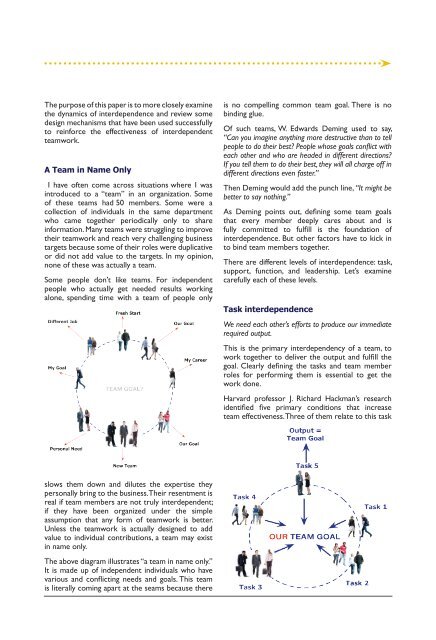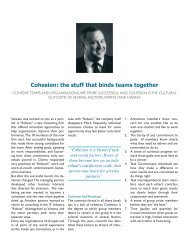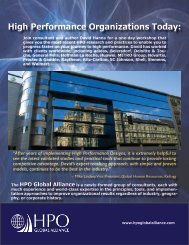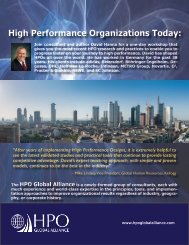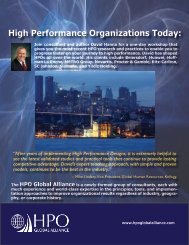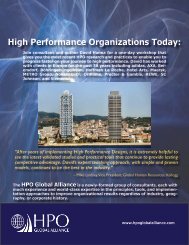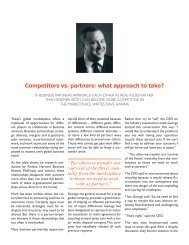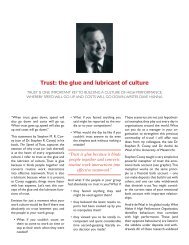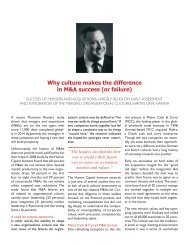High Performance Teaming
Create successful ePaper yourself
Turn your PDF publications into a flip-book with our unique Google optimized e-Paper software.
The purpose of this paper is to more closely examine<br />
the dynamics of interdependence and review some<br />
design mechanisms that have been used successfully<br />
to reinforce the effectiveness of interdependent<br />
teamwork.<br />
A Team in Name Only<br />
I have often come across situationswhere I was<br />
introduced to a “team” in an organization. Some<br />
of these teams had50 members. Some were a<br />
collection of individuals in the same department<br />
who came together periodically only to share<br />
information. Many teams were struggling to improve<br />
their teamwork and reach very challenging business<br />
targets because some of their roles were duplicative<br />
or did not add value to the targets. In my opinion,<br />
none of these was actually a team.<br />
Some people don’t like teams. For independent<br />
people who actually get needed results working<br />
alone, spending time with a team of people only<br />
is no compelling common team goal. There is no<br />
binding glue.<br />
Of such teams, W. Edwards Deming used to say,<br />
“Can you imagine anything more destructive than to tell<br />
people to do their best? People whose goals conflict with<br />
each other and who are headed in different directions?<br />
If you tell them to do their best, they will all charge off in<br />
different directions even faster.”<br />
Then Deming would add the punch line, “It might be<br />
better to say nothing.”<br />
As Deming points out, defining some team goals<br />
that every member deeply cares about and is<br />
fully committed to fulfill is the foundation of<br />
interdependence. But other factors have to kick in<br />
to bind team members together.<br />
There are different levels of interdependence: task,<br />
support, function, and leadership. Let’s examine<br />
carefully each of these levels.<br />
Task interdependence<br />
We need each other’s efforts to produce our immediate<br />
required output.<br />
This is the primary interdependency of a team, to<br />
work together to deliver the output and fulfill the<br />
goal. Clearly defining the tasks and team member<br />
roles for performing them is essential to get the<br />
work done.<br />
Harvard professor J. Richard Hackman’s research<br />
identified five primary conditions that increase<br />
team effectiveness. Three of them relate to this task<br />
slows them down and dilutes the expertise they<br />
personally bring to the business. Their resentment is<br />
real if team members are not truly interdependent;<br />
if they have been organized under the simple<br />
assumption that any form of teamwork is better.<br />
Unless the teamwork is actually designed to add<br />
value to individual contributions, a team may exist<br />
in name only.<br />
The above diagram illustrates “a team in name only.”<br />
It is made up of independent individuals who have<br />
various and conflicting needs and goals. This team<br />
is literally coming apart at the seams because there


